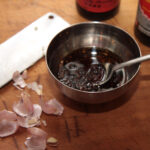
Difference Between Camphor and Mothballs
When it comes to protecting your clothes and belongings from pesky insects, two commonly used substances are camphor and mothballs. While they might appear to serve a similar purpose, there are significant differences between the two. In this article, we will explore the distinctions and help you understand which one is best suited for your needs.
Table of Contents
What is Camphor?
Camphor is a waxy, white solid derived from the wood of the camphor tree. It has a distinct strong aroma and is commonly used in religious ceremonies and traditional medicine. Camphor is known for its strong insect-repellent properties and is often used to safeguard clothes, particularly in humid regions.
What are Mothballs?
Mothballs, on the other hand, are small balls made of naphthalene, paradichlorobenzene, or a combination of both. They are primarily used to protect clothing and other materials from damage caused by moths, larvae, and other insects. Mothballs have a powerful and long-lasting odor that acts as a deterrent for pests.
The Differences:
1. Composition: The primary distinction between camphor and mothballs lies in their composition. Camphor is a natural substance derived from the camphor tree, while mothballs are synthetic and made from chemicals like naphthalene or paradichlorobenzene.
2. Odor: Camphor has a strong, characteristic smell that many find pleasant, while mothballs have a more pungent and lingering odor that some individuals may find overpowering.
3. Safety Concerns: Both camphor and mothballs should be used with caution. However, mothballs are considered more harmful due to their chemical nature. They emit toxic fumes that can be hazardous if inhaled directly or in large quantities. Camphor, on the other hand, may cause skin irritation in some individuals, but it is generally considered safer than mothballs.
4. Effectiveness: While both substances repel insects effectively, mothballs have a more long-lasting effect. Their strong odor can remain active for weeks, even months, providing continuous protection against pests. Camphor, though effective, may require more frequent replacement or replenishment to maintain its repellent properties.
Conclusion:
Understanding the difference between camphor and mothballs is crucial when choosing the best option to protect your clothes and belongings. Camphor, derived from natural sources, offers a pleasant scent and is generally safer to use. However, if you require long-lasting protection, especially in areas prone to infestations, mothballs, despite their strong odor, may be more suitable. Ultimately, the choice depends on your specific needs and preferences.
In summary, camphor and mothballs differ in composition, odor, safety concerns, and effectiveness. By considering these factors, you can make an informed decision on which product to use for your insect-repelling needs.


